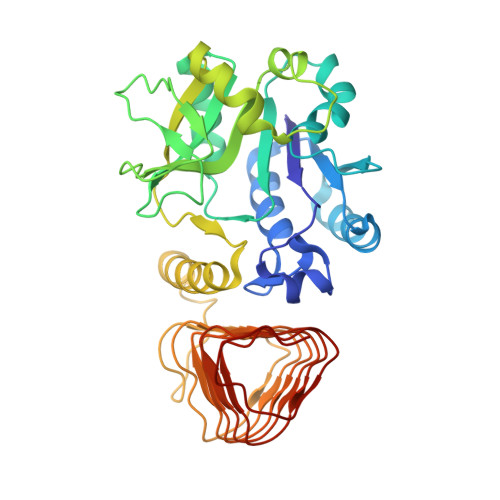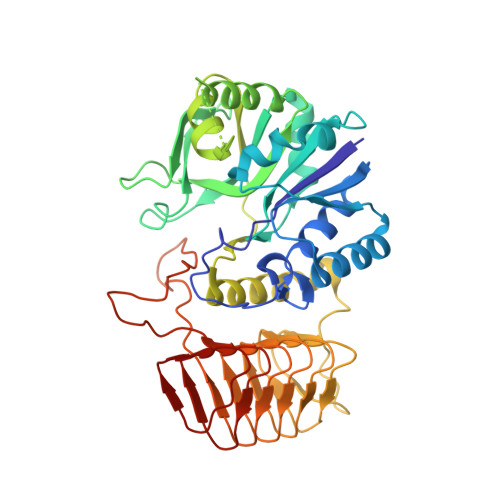Cryo-EM structures of human GMPPA-GMPPB complex reveal how cells maintain GDP-mannose homeostasis.
Zheng, L., Liu, Z., Wang, Y., Yang, F., Wang, J., Huang, W., Qin, J., Tian, M., Cai, X., Liu, X., Mo, X., Gao, N., Jia, D.(2021) Nat Struct Mol Biol 28: 1-12
- PubMed: 33986552
- DOI: https://doi.org/10.1038/s41594-021-00591-9
- Primary Citation of Related Structures:
7D72, 7D73, 7D74 - PubMed Abstract:
GDP-mannose (GDP-Man) is a key metabolite essential for protein glycosylation and glycophosphatidylinositol anchor synthesis, and aberrant cellular GDP-Man levels have been associated with multiple human diseases. How cells maintain homeostasis of GDP-Man is unknown. Here, we report the cryo-EM structures of human GMPPA-GMPPB complex, the protein machinery responsible for GDP-Man synthesis, in complex with GDP-Man or GTP. Unexpectedly, we find that the catalytically inactive subunit GMPPA displays a much higher affinity to GDP-Man than the active subunit GMPPB and, subsequently, inhibits the catalytic activity of GMPPB through a unique C-terminal loop of GMPPA. Importantly, disruption of the interactions between GMPPA and GMPPB or the binding of GDP-Man to GMPPA in zebrafish leads to abnormal brain development and muscle abnormality, analogous to phenotypes observed in individuals carrying GMPPA or GMPPB mutations. We conclude that GMPPA acts as a cellular sensor to maintain mannose homeostasis through allosterically regulating GMPPB.
Organizational Affiliation:
State Key Laboratory of Membrane Biology, Peking-Tsinghua Joint Center for Life Sciences, Academy for Advanced Interdisciplinary Studies, School of Life Sciences, Peking University, Beijing, China.





















